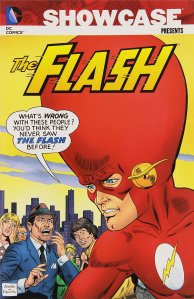Contents: Batman #229 (February 1971) to #244 (September 1972); Batman stories from Detective Comics #408 (February 1971) to #426 (August 1972)
Key Creator Credits: Frank Robbins, Irv Novick, Bob Brown, Neal Adams, Denny O’Neil, Dick Giordano and others
Key First Appearances: Talia al Ghul, Ra’s al Ghul, Ubu, Doctor Moon, Matches Malone
Story Continues From: Showcase Presents Batman Vol. 5
Overview: Welcome back to the sixth (and sadly final) volume of the Showcase Presents Batman series. I am your host, Jerry – a reader of a lot of comics and a tardy blogger who is way overdue to get another one of these reviews posted.
Let’s dive in, because this is the volume we have been waiting for. We’ve got Denny O’Neil writing many of these issues, and we have Neal Adams drawing many of those same issues. Let’s take the concept of the League of Assassins (created by Adams in the Deadman stories in Strange Adventures) and bring it to the Batman books. But we need a leader of the League… a figurehead… maybe a Demon’s Head. Enter Ra’s al Ghul and his daughter Talia.
Over a series of non-consecutive issues across both Batman and Detective Comics, Batman is drawn into a battle that appears to be centuries old. Ra’s al Ghul has big plans for the world, and those plans do not involve Batman. To complicate matters, Talia has a romantic interest in Batman. Throw those in together, and you get some explosive stories, going from the streets of Gotham City to the remote peaks of Nanda Parbat. Keep your Lazarus Pit handy, because someone is not walking away from this fight.
In between these classic al Ghul stories, this volume gives us a mix of mostly solo Batman stories. (Robin could usually be found in his own back-up feature in Batman, while Batgirl had her own back-up feature in Detective Comics.) We do get two visits from traditional Batman foes, with Two-Face and Man-Bat. Otherwise, this collection features a lot of detective stories, with Batman having to solve a mystery or follow the clues to a solution.
There is one new addition to the Batman mythos – the creation of Batman’s Matches Malone identity. Malone was a mob boss killed by Ra’s al Ghul. Batman seized upon the opportunity and kept Malone’s death a secret. He would dress up as Malone to infiltrate criminal hangouts to obtain information that he wouldn’t normally be able to get if he came strolling into the room as Batman. The Matches Malone identity will be used a lot over the years by many writers, and it adds a new approach to Batman’s quest to rid Gotham City of crime.
Why should these stories be Showcased?: This was a hot and cold book for me. The stories are either INCREDIBLE or average. Reading through this book, I grew to look forward to the O’Neil-Adams stories, and I learned to dread the Robbins stories. (Not to bash on Frank Robbins here. I like his stuff, just not on Batman.) In this era, you were given a lot of different versions of Batman – super-hero, detective, crime fighter and more. If you like Batman to have a lot of different roles, this is a great collection. If you want one particular take on Batman, this might not be the book for you.
Footnotes: Batman #233 and #238 are reprint issues. The covers are included in this collection.
Batman #237 features the Batman and Robin attending the Halloween parade in Rutland, Vermont. For more information on Rutland, see Essential Avengers Vol. 4.
If you like this volume, try: the Batman by Neal Adams omnibus from 2016. Yes, if you have been reading this blog for some time, then you have already read two-thirds of this book. You’ll get the Adams stories from Batman, Detective Comics, The Brave and the Bold, and World’s Finest. You even get reprints of the two Batman Power Records that Adams did. My personal opinion here, but the only downside of this collection is that it contains Batman: Odyssey. It’s a beautifully drawn story, but it needed a strong writer and editor to bring that title together. Regardless of my opinions on Odyssey, the other stories deserve to be viewed on an oversized white page with modern color printing. If you look around, you should be able to find it for less than cover price, and it will look so good sitting on your bookshelf.










